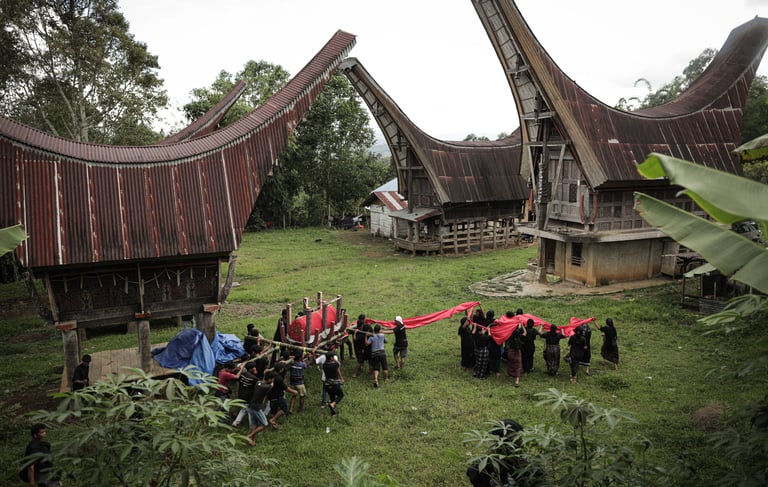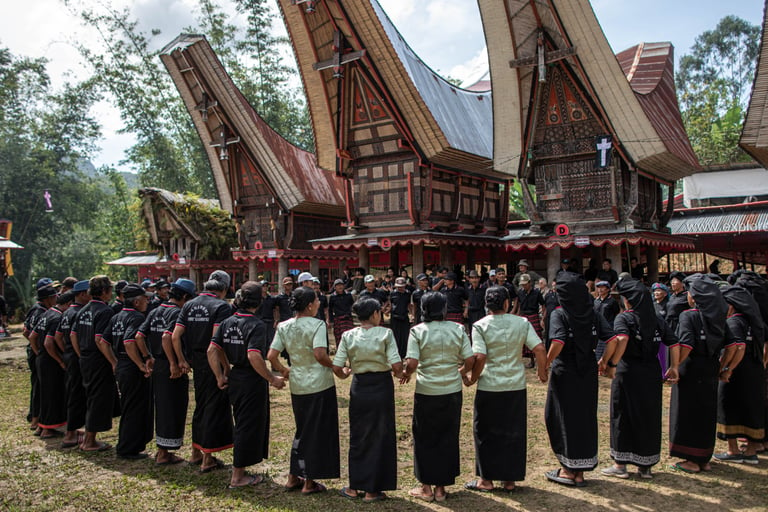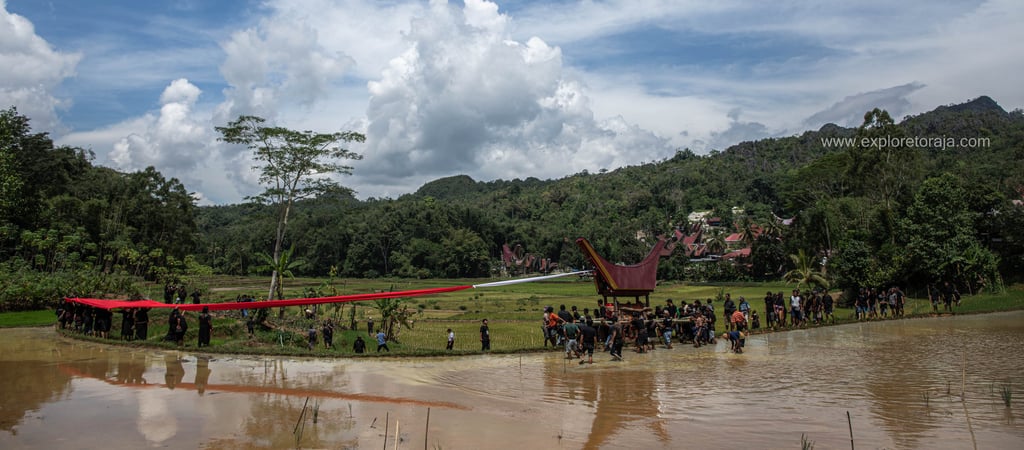R A M B U S O L O
Rambu Solo is a vital and elaborate funeral ceremony of the Toraja people in Indonesia, emphasizing the celebration of life and the spiritual journey of the deceased. It involves complex rituals, including the sacrifice of animals, and is a significant cultural event that fosters community involvement and reinforces social bonds. This ceremony underscores the Torajan belief in the importance of honoring ancestors and ensuring that spirits reach the afterlife, highlighting the rich cultural heritage of the Toraja people.
Why Funeral is Important for Torajan
Burial ceremonies are very important for the Toraja people, especially for the family and the deceased. We believe that the spirits honored in the ceremony will reach nirvana, where they will reunite with their ancestors. However, there are many things that need to be done during this ceremony; for example, you need to prepare animals such as buffalo and pigs. The budget required for this is very high and takes a long time to organize. For complete information, please ask me!


Best Time for Visiting Rambu Solo'
Toraja burial ceremonies can be held at any time; however, there are certain days when they cannot be conducted, such as holidays and public holidays. Months like June, July, August, September, December, and January are very suitable times; many major ceremonies are held during these months. For schedule and information, please contact me. I will do my best to provide that information.


What Torajan people think about Tourist Visiting Funeral ?
As the Toraja people, we see that tourism and our culture are beautiful and unique, and it can become well-known internationally. We, as Toraja people, are very proud of that. But what is our perspective on tourists? Yes, we are happy and glad that they want to visit our place and see our culture. However, it is advisable for tourists who wish to witness the burial ceremonies to use local guides. There are many things that should and should not be done during these ceremonies. We appreciate the interest, but please respect our culture by honoring it!





This ceremony is considered to be very time-consuming, involving a lengthy process that requires thorough preparation, and the family must gather together before it can be conducted.
Typically, when a Torajan person passes away, the body is kept or placed inside their home or their Tongkonan (Traditional House). The Torajan people believe that the corpse, referred to as Tomakula, remains in the house as their spirit stays with the family, which is why they are viewed as if they are merely sick or asleep (Tomakula).
While Tomakula waits for the ceremony, children, siblings, and family members will prepare for the rituals. For instance, the family will purchase water buffalo, prepare the ceremony location, and determine a suitable time to hold the ceremony.
On the first day of the Torajan ceremony, the body is taken down from the house and transported to their rice barn, where Tomakula will stay for three days and two nights. After that, the family will take the body to the village or the homes of relatives, symbolizing that when the person was alive, they often roamed their village. This day is considered the last time they will wander around the village (Mapasonglo' or Mapalao). It is also customary to say that their spirit is no longer with us and has now journeyed to their ancestors (Puya) or to Nirvana.
On the second day, all relatives and villagers will attend the funeral ceremony, bringing pigs and water buffalo to honor the family or the departed spirit. On this day, the Badong dance is usually performed, where mostly men form a circle and sing prayers for the spirit. The pigs brought will be slaughtered and shared with the guests attending.
On the third day, the buffalo will be sacrificed as provisions for the journey of the deceased. The Torajan people believe that the more buffalo there are, the faster the spirit will reach their ancestors. The meat from the buffalo will be distributed to the villagers, the Tongkonan, and the family.
On the fourth day, the final day, the family will send off the lifeless body to its final resting place along with deceased family members. The body is usually placed in a stone grave, a natural cave, or a small house made of wood or concrete.
How Long the Funeral Held?
for more info you can contact me..!!

